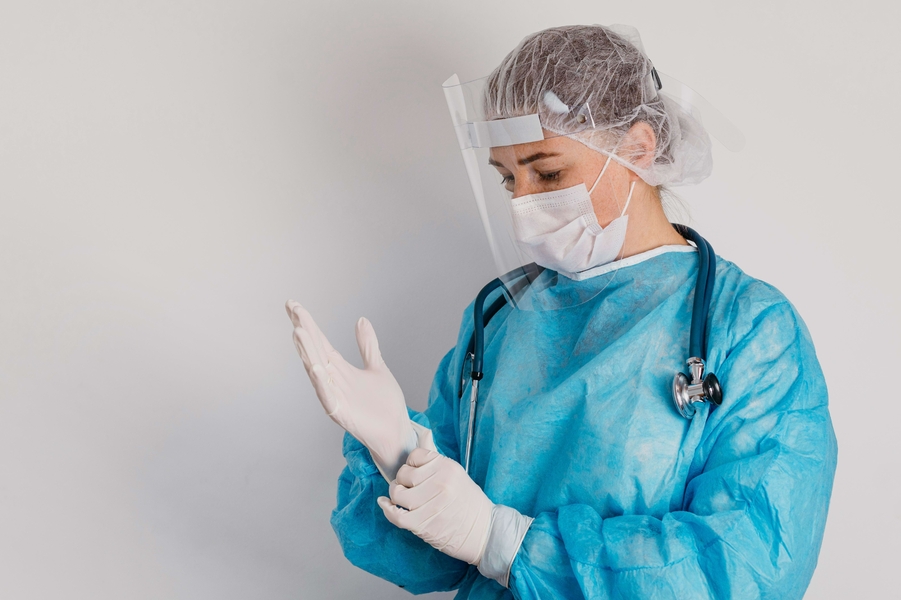
How to choose medical clothing for work at risk of infectious diseases
Infectious pathogens pose the greatest danger to healthcare professionals. Therefore, their primary task is to protect themselves from them and avoid transferring pathogens to other patients. Such working conditions require special protective clothing and additional accessories. Every healthcare professional should know what they are and how to choose them.
Protective medical clothing for infectious diseases departments
Personnel working with infectious patients are always in a high-risk area. Therefore, safety during work is only possible if all protective measures are followed, including wearing special sets of medical clothing.
Depending on the level of danger, medical uniforms can be supplemented with personal protective equipment (PPE):
- mask;
- with gloves;
- shoe covers;
- cap;
- apron.
In addition, the equipment of an employee of the infectious diseases department consists of a protective gown or coveralls with a hood. Additionally used:
- respirators;
- glasses;
- protective screen.
PPE has a limited shelf life and is most often used once.
Features of infectious disease specialists' overalls:
- exceptional practicality and wear resistance;
- simple cut;
- unisex style without a separate size chart for women and men;
- limited choice of colors - white and blue.
The main purpose of using PPE is to create a barrier between the body and the external hazardous environment. For this purpose, coveralls are the best option, as they provide the greatest tightness.
Material and method of manufacturing special medical clothing
Disposable medical clothing is made of nonwoven fabrics based on synthetic fibers of various natures. They are combined in several layers, combined with each other and with membrane components.
Varieties of materials that provide specialized protection for healthcare workers:
- Spunbond is a polypropylene material with a density of 50 to 150 g/m2, additionally treated against static accumulation.
- SpunBel is an improved version of spunbond that has an additional layer of membrane film that does not allow bacteria and viruses to pass through.
- SMS consists of three layers, with Meltblown between the spunbond. It is characterized by high tightness and tear resistance.
- Medispan is a multilayer structure that includes spunbond, spunbelt, a polyethylene membrane and hydrophilic additives. It is one of the best materials for anti-epidemic protective clothing, as it is both durable and lightweight, retains moisture and allows air to pass through.
Technologies for manufacturing nonwovens and products from them:
- hot melt;
- ultrasonic welding;
- hot air bonding;
- water jet bonding.
The most practical method is ultrasonic. Medical clothing obtained in this way has:
- sealed strong seams;
- low weight;
- uniform density and thickness;
- aesthetic appearance and pleasant to the touch surface.
Criteria for choosing medical clothing for hazardous environments
The most important condition for the effectiveness of medical clothing is the level of protection, according to the working conditions. The barrier function - the ability to retain microorganisms that cause infectious diseases - is the main argument when choosing medical PPE. Other criteria worthy of attention:
- strength of fabric and seams, resistance to punctures, tears;
- disinfectant treatment;
- practicality - freedom of movement, weight, impact on the body microclimate, the possibility of irritation, antistatic properties.
Therefore, before buying a special medical uniform, it is worth asking:
- its purpose;
- composition of materials and manufacturing method;
- compliance with the standards governing the requirements for elements of professional biosafety clothing.





























